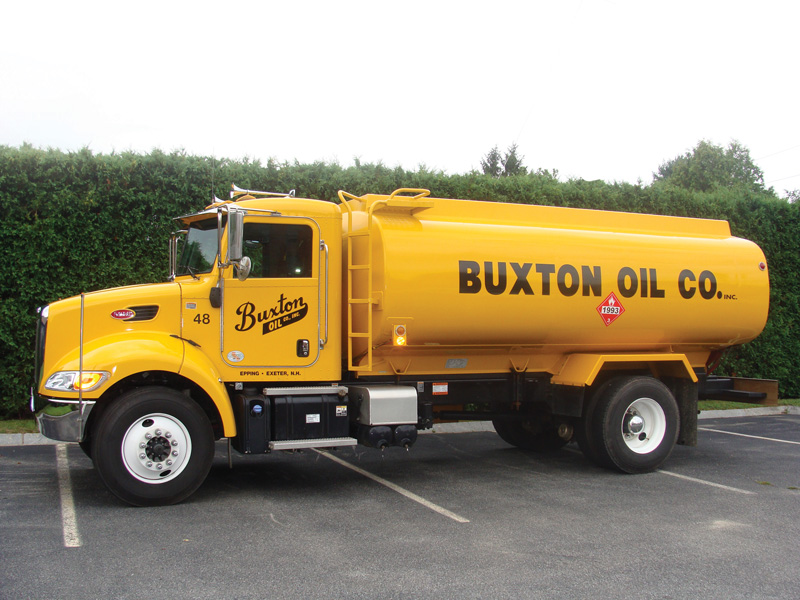EPA Sets Sights on Heavy-Duty Vehicles in New Proposal
The Environmental Protection Agency is looking to major changes for heavy-duty vehicles to combat climate change. Heavy-duty trucks account for 23% of the transportation sector’s greenhouse gas emissions.
The new proposal calls for a number of changes a number of changes to vehicle efficiency, but here are the quick details:
- Bring fuel consumption for tractor-trailers down by 24%
- Bring fuel consumption for heavy trucks down by 16%
- Bring fuel consumption for light trucks down by 16%
- Cut CO2 emissions by approximately 1 billion metric tons
- Cut fuel costs by about $170 billion
- Reduce oil consumption by up to 1.8 billion barrels over the lifetime of the vehicles
- Recoup additional costs of vehicles in less than two years via fuel savings
“Once upon a time, to be pro-environment you had to be anti-big-vehicles. This rule will change that,” said U.S Transportation Secretary Anthony Foxx. “In fact, these efficiency standards are good for the environment – and the economy. When trucks use less fuel, shipping costs go down. It’s good news all around, especially for anyone with an online shopping habit.”
Be sure to contact your representatives about this issue via the information below. But also let us know what you think about these proposed changes in the comment box, on Twitter or Facebook.
Read the full text of the regulatory proposal below:
The U.S. Environmental Protection Agency (EPA) and the Department of Transportation’s National Highway Traffic Safety Administration (NHTSA) are jointly proposing a national program that would establish the next phase of greenhouse gas (GHG) emissions and fuel efficiency standards for medium- and heavy-duty vehicles. This “Phase 2 program” would significantly reduce carbon emissions and improve the fuel efficiency of heavy-duty vehicles, helping to address the challenges of global climate change and energy security.
Building on the first medium- and heavy-duty vehicle GHG emission and fuel efficiency standards (Phase 1), Phase 2 would further reduce fuel consumption and carbon pollution through performance-based standards based on robust technical data and extensive stakeholder outreach. This new phase of the national program would benefit businesses and consumers, saving the industry billions of dollars’ worth of fuel, reducing the costs for transporting goods, while reducing GHG emissions by 1 billion metric tons. The Phase 2 standards would spur innovation, encouraging the development and deployment of existing and advanced cost-effective technologies for a new generation of cleaner, more fuel-efficient commercial trucks; creating opportunities for job growth; and providing an opportunity for U.S. industry to build on its position as a world leader in fuel-efficient trucking technologies. Under these proposed standards, the fuel consumption of tractor trailers alone could drop as much as 24%.
Ambitious yet Achievable Standards
Working with industry and other partners, EPA and NHTSA previously developed and are midway through implementing the model year 2014-2018 heavy-duty vehicle GHG and fuel efficiency standards. These standards, or “Phase 1” of the program, has been a success, cutting carbon emissions and reducing petroleum use through the use of off-the-shelf technologies. Responding to the President’s Climate Action Plan, EPA-420-F-15-900 June 2015 Regulatory Announcement and his February 2014 directive, the proposed Phase 2 program would go beyond Phase 1, setting performance-based standards that would reach well into the next decade. The proposed standards would be met through wider deployment of existing and advanced technologies.
The proposed Phase 2 standards, which begin in the model year 2021 (model year 2018 for trailers) and culminate in standards for model year 2027, are the product of a comprehensive assessment of existing and advanced technologies and extensive stakeholder outreach. The agencies have had well over 300 meetings with manufacturers, fleets, owner-operators, dealerships, suppliers, non-governmental organizations (NGOs), consumer groups, labor unions, and other stakeholders to identify and understand the opportunities and challenges associated with fuel saving technologies. Like Phase 1, the proposed Phase 2 standards would apply to a wide range of on-road vehicles, from the largest pickup trucks and vans to semi-trucks – and for the first time, would also include trailers.
In order to significantly reduce fuel consumption and carbon emissions while ensuring the heavy-duty industry continues to meet the diverse needs of our transportation sector, the agencies have carefully designed a set of proposed standards that are ambitious yet achievable and affordable.
The Phase I standards are fully aligned among EPA, NHTSA and the state of California which allows manufacturers to build a single fleet of vehicles and engines for the U.S. market. The proposed Phase 2 program also fully harmonizes EPA and NHTSA standards. The agencies have worked closely with the State of California’s Air Resources Board in developing these proposed standards. All three agencies are committed to the final goal of a single national program that would allow manufacturers to continue to build a single fleet of vehicles and engines.
The proposed Phase 2 program would significantly reduce carbon pollution, cutting GHG emissions by approximately 1 billion metric tons and conserving about 1.8 billion barrels of oil over the lifetime of the vehicles sold under the program.
In addition to providing benefits to the environment and improving energy security, the Phase 2 program would save operators money, bringing down the costs of transporting freight, providing savings, benefiting businesses and consumers alike.
- Payback periods for truck owners would be favorable: the buyer of a new long-haul truck in 2027 would recoup the extra cost of the technology in under 2 years through fuel savings.
- Phase 2 would save vehicle owners about $170 billion in fuel costs over the lifetime of the vehicles sold in the regulatory timeframe.
The agencies estimate the proposed standards would result in approximately $230 billion in net benefits over the lifetime of the vehicles sold in the regulatory timeframe, while costing the affected industry less than one-tenth that amount (about $25 billion over the same period).
Public Participation Opportunities
The agencies welcome your input on this proposed rule. Further information on opportunities for public participation may be found on EPA’s and NHTSA’s websites (see below for more information). You should consult the Federal Register notice for this proposal for more information about how to submit comments, when the comment period will close, and about where and when public hearings will be held.
For More Information
You can access the proposed joint rules and related documents on EPA’s Office of Transportation and Air Quality (OTAQ) webite at: www.epa.gov/otaq/climate/regs-heavy-duty.htm


